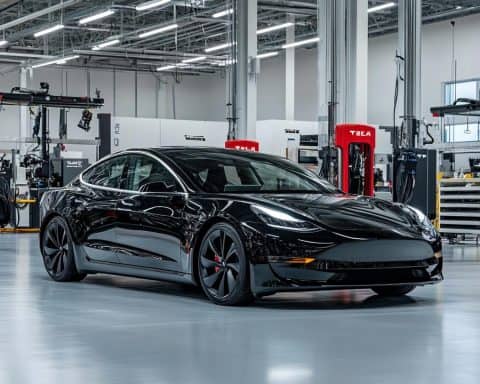The North American Bikeshare & Scootershare Association (NABSA) conference recently wrapped up its annual gathering in Philadelphia, with urban mobility leaders converging to tackle the future of shared transportation. This year’s theme, “Building community through shared micromobility,” attracted pioneers eager to revolutionize urban landscapes.
A session titled “From 0 to 10 Million Trips: How to Grow Ridership and Maintain Success” united key figures from North America’s premier bike-share networks, spotlighting the remarkable strides these systems have made. Attendees heard from influential minds like Justin Hanna from Bike Share Toronto and Mario Delgado from Mexico City’s Bici Pública, each sharing the unique growth stories of their respective cities.
Bike Share Toronto’s ambitious expansion plans aim to scale its fleet to 10,000 bikes and e-bikes by 2025. Meanwhile, Montreal’s BIXI reported an 85% surge in unique users over four years, showcasing a growing appetite for sustainable travel options.
Electric bikes have taken center stage, with New York’s Citi Bike aiming for a fleet comprising 40% e-bikes. These vehicles, accounting for a significant portion of ridership, address the need for convenient and eco-friendly options.
Critical challenges remain, such as rebalancing bike locations and innovative maintenance solutions. Toronto grapples with morning rush hour congestion, highlighting the need for strategic station deployment. Conversely, Montreal’s “Carrefour BIXI” redefines maintenance efficiency, promising quick, on-demand repairs.
As these systems evolve, innovative strategies and user-centered design are paving the way for vibrant, interconnected urban communities, with bike-share networks poised to become integral to sustainable city living. As this sector continues to innovate, the excitement surrounding its potential to reshape urban transportation remains palpable.
The Untold Impact of Shared Micromobility on Urban Communities
The North American Bikeshare & Scootershare Association (NABSA) conference unveiled fresh insights into the transformative potential of shared transportation systems like bike shares and scooter networks. While the rapid growth and ambitious expansion plans of these networks are widely discussed, there are several lesser-known yet equally significant impacts that are shaping daily lives and community dynamics.
Environmental Benefits and Urban Health
Beyond the well-publicized benefits of reducing traffic congestion and carbon emissions, shared micromobility plays a pivotal role in enhancing urban air quality. Cities that have embraced these systems notice a tangible decrease in air pollution levels, contributing to improved public health. But just how significant are these environmental benefits? According to environmental studies, each shared bike or e-scooter ride can effectively reduce approximately 0.5 kg of CO2 emissions compared to car trips, signifying a substantial collective impact when scaled across millions of rides annually.
The Sociocultural Dimension: Fostering Community Connections
While shared transportation systems are often viewed purely through the lens of utility and efficiency, a hidden layer of their impact involves strengthening community ties. Micromobility hubs become meeting points for individuals from diverse backgrounds, fostering interaction and community spirit. This unifying aspect is particularly valuable in metropolitan areas where social fragmentation can be a challenge. People have reported increased neighbourhood cohesion and community engagement as direct outcomes of using these shared spaces.
Economic Ripple Effects
The economic advantages of micromobility systems extend well beyond the revenue generated from rides. Local businesses benefit significantly as riders are more likely to explore nearby shops and cafes. This patronage creates a multiplied effect, boosting local economies. Such systems also generate employment opportunities, not only in terms of maintenance and operations but also through innovative startups that create apps and tech solutions to enhance user experiences.
Barriers and Controversies: Navigating the Path to Inclusivity
Despite the numerous benefits, shared micromobility systems face their share of controversies, particularly in terms of accessibility and equitable distribution. Low-income neighbourhoods frequently grapple with inadequate coverage and availability of these services, perpetuating disparities in urban transportation access. How are cities tackling this issue? Some municipalities are experimenting with subsidised programmes and incentives to ensure widespread access, though these initiatives are still in the early stages and face budgetary constraints.
User Data Privacy: A Growing Concern
An ongoing debate surrounds the privacy of user data collected by micromobility companies. Questions are being raised about how user information, including travel patterns and personal data, is stored and utilised. As cities increasingly rely on data-driven insights to improve transportation networks, ensuring the protection of user data becomes paramount. Companies must navigate the delicate balance between innovation and privacy, employing strict data security measures and transparency in their operations.
For further insight into shared mobility systems and their impact, readers can visit the North American Bikeshare & Scootershare Association.
This evolving landscape of shared micromobility presents both vast opportunities and challenges. As urban areas continue to grow and evolve, these systems are poised to play an even larger role in shaping sustainable, interconnected communities that are designed to meet the needs of future generations.






















